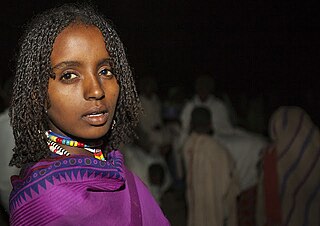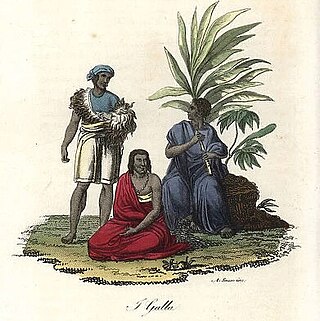Conflicts leading to the Turbi massacre
Inter-clan tensions
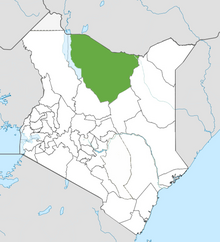
The Gabra and Borana, two large ethnic clans, have resided in northern Kenya for generations, with the Borana also residing in Southern Ethiopia. While the two clans had coexisted, they would encounter violent inter-clan conflicts consisting of resource disputes and cattle raiding practices typical of the region. The conflict culminating with the Turbi massacre can be traced back to a 2002 unsolved murder of a Gabra man. The Gabra, believing the Borana to be responsible for the murder and, in retaliation, raided the Borana, stealing seven hundred twenty-eight goats. This escalation increased the frequency of conflict, necessitating intervention in the region. In conjunction with the Kenyan government and several NGOs, clan officials held several talks between the two clans devising a peace plan following the framework of the Modogashe Declaration (2001), a document agreed upon by several pastoralist clans, outlining the consequence and reparations of inter-clan violence in Northern Kenya. These meetings were found to be largely inconclusive and unsuccessful. The resolution, which stipulated the transfer of goats as reparations, was largely rejected by both clans. January 2003, the three-year period of escalation within clan relations, Kenyan President Mwaki Kibaki,visited the Madera region in northeastern Kenya, criticizing the reparation system laid out by the Modogashe Declaration. His comments reduced the effectiveness of a system that de-escalated inter-clan conflicts, eventually leading to the District MP dissolving the Modogashe Declaration.
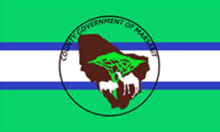
Several unsuccessful meetings were called in the following three years to ease clan tensions, all unsuccessful, until peace conditions had finally been agreed upon in May 2005. This peace was short-lived as Ethiopian Boranas were killed, leading to retaliatory conflicts and worsening the already severe clan tensions. The conflict eventually resulted in the death of Borana chief Benjamin Boru Wario. This sparked several more violent attacks, culminating with a series of raids conducted by around one thousand Borana bandits on Gabra villages surrounding Turbi on July 12, 2005.
Marsabit-District Pastoralist conflict
Northern Kenya, dubbed the "Badlands," is home to extensive livestock production and generations of ethnic pastoral violence. The region is primarily home to nomadic pastoralists. Pastoralists, dependent on the vitality of their livestock, often engage in resource conflicts amongst other pastoralist clans concerning access to water and pasture. As access to resources declines, the frequency of interclan violence increases, along with the prominent culture of cattle theft. Sitting on the border between Ethiopia and Kenya, the region has historically led to ethnic divisions between the transfer of Borana across Ethiopian and Kenyan borders. A consequence of British colonialism was the transfer of nomadic clans across borders, in line with political objectives. This transfer, especially in the crossing of Ethiopian Borana into Kenya, increased the interethnic animosity, as conflict, or instead, difference, was not limited to the ethnic lines but the intersection of national identity.
Marsabit District is located in Kenya's driest region, with around 80% of its population being pastoralists Home to several pastoralist clans ( Gabra, Borana, Turkana, Rendille, and Samburu.) The region is notorious for major violent conflicts between ethnic groups. Following droughts, the nomadic clans tend to converge around existing water sources, often competing for the survival and success of their livestock.
OLF involvement
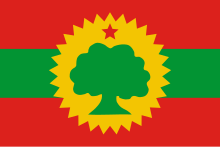
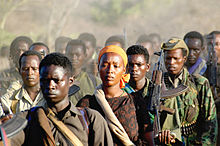
The Oromo Liberation Front, OLF, has long been associated with the Turbi Massacre. A political party with a military faction, the Oromo Liberation Army (OLA), is believed to have heavily contributed to the Turbi Massacre. The OLF is a nationalist party within Ethiopia that strongly advocates for the self-determination and liberation of the Oromo people. Fighting the Ethiopian and Kenyan governments, the OLF The Gabra and Borana, both of whom fall under the larger Oromo umbrella, share differing stances on the legitimacy of the OLF. The OLF has been primarily run by Ethiopian Boranas, while Kenyan Gabra's have rejected mainly the OLF's vision for the Oromo people. The Turbi Massacre was conducted with military-like precision, pointing to its premeditation and its organization by a larger body. The violence conducted on the Turbi Massacre was not a random spark of violence, instead an organized assault by a military force. Many of the attackers fled into Ethiopia, supporting the notion that the OLF instigated it.
Turbi land disputes
Turbi, currently recognized as part of the Marsabit District, has remained the center of many post-colonial ethnic and geographic conflicts. Turbi, the site of the massacre, while formally a part of Marsabit District, a primarily Gabra region, was considered a disputed territory, further fueling the tension in the area. Turbi, formerly part of the colonial Moyale District and predominantly Borana, has remained a central political conflict since 1984. MPs, or members of Parliament, local to the region have utilized the dispute as political fuel, promising their constituents the return of the remain of Turbi to either Moyale or Marsabit.
Modogashe Declaration (2001)
In 2001 pastoral clans in Eastern and North Eastern Kenya agreed upon several stipulations regarding cattle theft and pastoralist violence in the region. The declaration stipulates that 100 cattle should be paid by the bandit or offending party's village for every man killed, 50 for every woman, and 15 for any injuries sustained. In several districts, the declaration served as an effective means of resolving clan disputes and conflicts. While it may not have prevented conflicts between clans, it offered a resolution when followed by the concerned parties. In the conflicts leading up to the Turbi Massacre, the Modogashe Declaration was largely ignored. The Modogashe Declaration has not been observed in Marsabit District since 2004 when it was found to have no legal backing.
